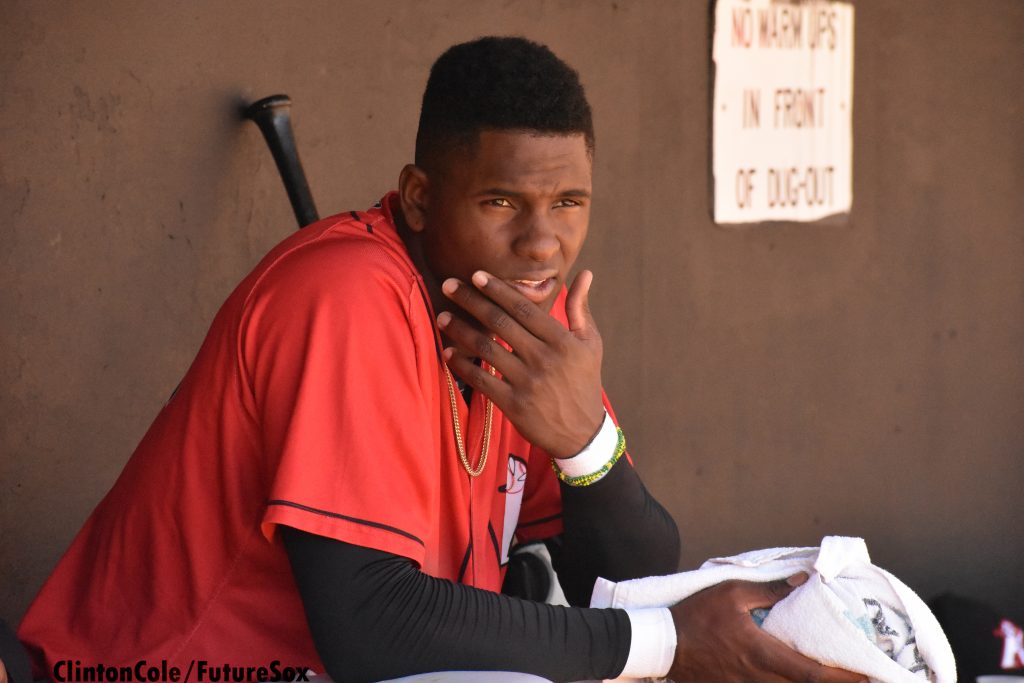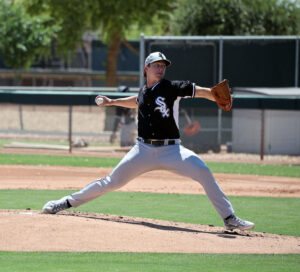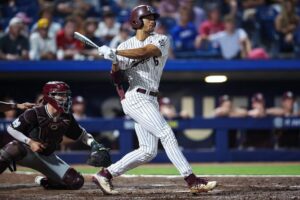An Analytical Discussion on Luis Robert

Assessing Luis Robert’s big-league impact is far from cut and dried. To be sure, the 22-year-old Cuban oozes five-tool talent, with a ceiling few other rookies can boast. But with every ceiling comes a floor, and that’s where things get dicey.
Some baseball insiders question how quickly and easily Robert can overcome the holes in his game, especially his minor-league record of poor plate discipline. I spoke to two highly respected prospect analysts to better understand their concerns.
But first, let’s take a closer look at that tantalizing ceiling. To do so, I began by examining some of the systems that project the player performance of every major leaguer for the upcoming season.
HIGH CEILING
What does the ceiling look like for Robert’s first full year of pro ball? How about 38 home runs, 108 RBIs, 19 stolen bases, a .382 OBP and a 5.5 WAR? Those off-the-chart results represent the 90th percentile outcome for Robert in 2020 (based on a 162-game season) by Baseball Prospectus’ Pecota MLB player projections.
The most likely outcome, the 50th percentile, still has some impressive numbers for the highly-touted rookie: 30 home runs, 89 RBIs, 16 stolen bases, a .318 OBP and a 3.7 WAR. While Baseball Prospectus has some of the more optimistic projections for Robert, even the lower outcomes of RotoGrinder’s The BAT are acceptable for a rookie season: 20 home runs, 67 RBIs and a .298 OBP.
So what is realistic for Robert in 2020?
The good news is that there’s no extra pressure on him. He’ll likely begin his major league career near the bottom of the line-up, where his production will be a bonus. Robert certainly looked the part of a major-league ballplayer in Spring Training, going 10-for-30 with one home run and three steals. And the White Sox are confident enough in the young outfielder’s future that they gave him a six-year, $50 million contract this past winter, a sum that may prove to be a bargain — if he can improve plate discipline.
PLATE ISSUES?
“He has gotten by on his rare physical gifts, but I don’t view him as an advanced hitter,” says James Anderson, lead prospect analyst at RotoWire. “Even Byron Buxton walked significantly more than Robert above Low-A — it’s very rare for a consensus top-five prospect to have the type of strikeout-to-walk ratio than Robert posted in the upper levels, which gives him a pretty low floor for someone as accomplished as he is in the minors.”
Adds Eno Sarris, baseball analytics writer at The Athletic: “I tend to agree with the projections that have him striking out nearly 30% of the time with around league-average overall production, which is good for the White Sox but not necessarily star-level. It may be more of a .250/20/20 type of a season than some want to think.”
Sarris crunched the numbers to explain his concerns. According to Sarris, the swinging strike rate in Double-A was about 10% in 2019. “But Robert swung and missed at 16.8% of the pitches he saw in Double-A last season, which is pretty far out there,” Sarris said.
Sarris did more analysis. Since 2006, he said, there have been 344 position players, age 23 or younger, with more than 240 plate appearances at Double-A, that have had a 16% swinging strike rate or worse. Only 22 players in that group were as productive as Robert: he was 55% better than league average (based on wRC+), and 22 were at least 49% better than league average.
“In that group of 22,” Sarris said, “you’ll find Carlos Santana, Jed Lowrie, Matt Wieters, Travis d’Arnaud, Evan Longoria, Justin Upton and Javier Baez. Then you’ll find one more still in the minor leagues. The other 13 were busts, plainly speaking. The average walk rate of the success stories was nearly 13%, and Robert walked 5.3% of the time. He could be Javier Baez-like, since he has prodigious tools, but the bat carries more risk than I think some realize.”
Anderson is equally concerned about the strikeout and walk rates. “The big issue is if a guy is striking out a ton AND not walking,” he explains. “Of 61 qualified hitters last year with a wRC+ over 115, the only one with a K% above 23% and a BB% below 7% was Eloy Jimenez, and I liked Eloy notably more as a prospect than I like Robert, particularly with regards to hit tool.”
Anderson expects Robert’s strikeout rate to exceed 23%, with a walk rate below 7%, in his first — and likely his second year of major league ball. “That’s where the concerns come in,” he said. “Plenty of good offensive players, even great offensive players, strike out over 25% of the time, like Nelson Cruz, Max Muncy, Matt Olson, Yoan Moncada, Pete Alonso and Eugenio Suarez, but when you’re striking out that much and not walking, that’s a sign that you don’t have much of a plan and are trying to get by on raw ability.”
He continues: “Guys like Charlie Blackmon, Adam Jones, Tim Anderson and Eddie Rosario have had a lot of success despite low walk rates, but those guys also logged K% below 20%. It’s fair to say that Robert is his own player and it doesn’t really matter what other players have done, but I’m just pointing out how unique he would be if he had success, in terms of wRC+ and OBP, in year one or even year two. I think he’ll get there, probably taking a somewhat similar path to Moncada — with fewer walks — before breaking out in year three or year four. He can still be pretty valuable if he’s hitting .245, but I doubt he’ll make a big real-life impact in the short term. He has 70-grade raw, but I don’t see him tapping into 30-plus homer pop for a couple seasons. However, he could steal 30 bases in his next full season.”
LEWIS BRINSON COMPARISON: POSSIBLE OR FAIR?
“I think he has slightly better raw tools than Brinson ever had, but I was similarly confident in Brinson’s hit tool when he was at Triple-A with the Brewers,” Anderson said. “It’s pretty rare for a prospect of Brinson’s caliber to bust that hard, so I don’t think it’s instructive to say Robert could bust like Brinson. However, the Brinson example is a reason not to expect superstar production from Robert in the short term. I’m much less concerned about a player potentially logging a 25 K% as long as I think they’ll take their walks.”
What do I think? I put a lot of stock in what Eno and James have to say. These guys know their stuff. But that doesn’t mean the White Sox can’t get a lot of value from Robert early in his career — with solid defense in centerfield, raw power at the back-end of the lineup that will destroy a pitcher’s mistakes over the middle of the plate, and elite speed that will add pressure to opposing defenses. And later in his career? Well, I have no idea, but it will be fun to watch — and dream!
Photo credit: Clinton Cole/FutureSox
Want to know right away when we publish a new article? Type your email address in the box on the right-side bar (or at the bottom, if on a mobile device) and click the SUBSCRIBE button. Our list is completely spam free, and you can opt out at any time. Also, consider supporting FutureSox on Patreon! You will get early access to special articles and Patreon-only posts, in addition to more benefits. Shop our exclusive merchandise! Show your support with the latest FutureSox apparel.






